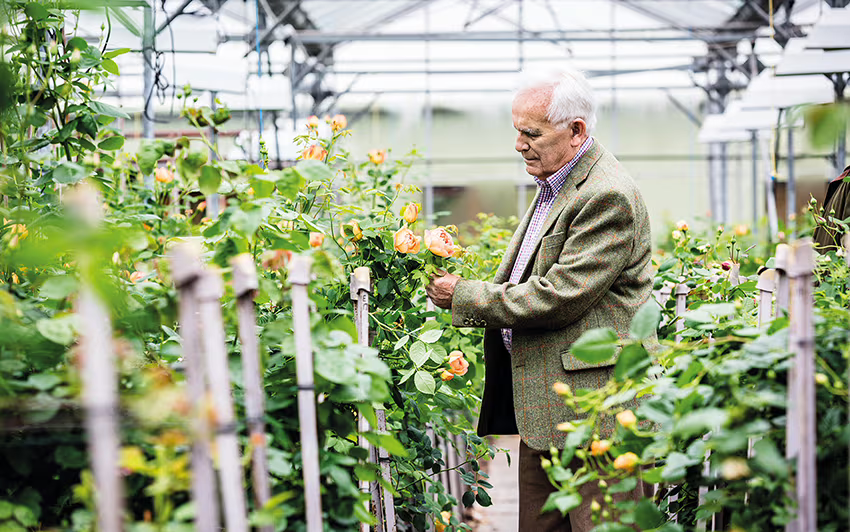Breeding an English rose
Breeding a new rose is a unique mix of art and science requiring patience and dedication. From pollination to sale the whole process of creating a new English Rose takes 12 years. With over 60 years of expertise our breeding programme is one of the largest in the world.
Each new rose begins as a cross between two existing roses, which we call the 'parents'. The key to successful rose breeding is having a deep understanding and intuition for which two roses might work well together. We are continually looking to identify plants which will pass down the characteristics that we desire.

Having selected suitable parents we collect the pollen from one parent and place it onto the stigma of the other. This process is called cross-pollination and would naturally be carried out by bees. Each year we do 40,000 individual cross-pollinations, all by hand, using a small knife to remove the pollen from the first parents and a paintbrush to apply it to the other parent.
The cross-pollination will eventually form a rose hip, containing around 10 child seeds - a mix of both parents. Like human children, each of those child seeds will be a completely unique mix of the parents' characteristics.
By November the hips will have ripened sufficiently for us to extract the child seeds. We cut the hips, remove the seeds and store them in refrigerators over winter. In January we will sow around 350,000 individual seeds on benches in our greenhouses. From then until spring these seeds will germinate into small plants with a smattering of blooms.
At this stage we are assessing full-sized rose bushes in true garden conditions. During the next five years, we carefully assess the plants for all the characteristics we aim to produce. Each year we select the best and propagate them in larger numbers until only 10 of the original seedlings remain.
"The goal remains the same - to try to develop the healthiest roses possible without compromising their beauty, fragrance, grace and most importantly, their charm."






















